Parents across the country face the common fear of their teenage children experimenting and becoming addicted to drugs.
As guardians of the young, knowing the signs of addiction in teens is indispensable in taking timely action.
Starting the journey towards understanding can save not just an adolescent’s present, but their entire future.
Signs of Addiction in Teens
In 2020, 6.9% of 12th graders reported daily marijuana use, while 35.2% reported past-year marijuana use
One of the critical steps in combatting addiction is being able to identify its indicators. Teenagers, being at a tender age, may exhibit subtle signs at first, which then evolve into more apparent symptoms as the addiction progresses.
Below, we delve into the signs of addiction in teens.
1. Changes in Behavior
Teenagers grappling with addiction often display significant changes in behavior. This could manifest as a loss of interest in activities they once relished, withdrawal from family and friends, and truancy. A sudden drop in academic performance and secretive behavior are also hallmarks of this change.
2. Mood Changes
Addiction’s impact on the adolescent brain is significant. Teens may exhibit mood swings, irritability, and aggression. Unexplained euphoria followed by sudden bouts of depression could be indicative of substance abuse. It is essential to observe these mood changes closely, as they might provide insight into underlying issues.
3. Changes in Personality
A transformation in one’s child that is too drastic could be a red flag. Personality changes might include adopting new circles of friends or engaging in uncharacteristic risk-taking behavior. Parents should stay attuned to these alterations, especially if they are accompanied by other signs of addiction.
4. Physical Changes
Physical manifestations of addiction in teenagers include bloodshot eyes, changes in appetite, unexplained weight loss or gain, and deterioration in personal grooming habits. Additionally, you may notice hand tremors, slurred speech, or an unsteady gait. These physical signs are often hard to dismiss and should be taken very seriously.
5. Possession of Drug Paraphernalia
Finding drug paraphernalia such as pipes, rolling papers, or prescription bottles among your teen’s belongings is an obvious sign of substance abuse. Engage your child in a conversation about these findings, approaching the topic with openness and concern.
Frequently asked questions about the signs of addiction in teens
We hear many common questions from parents concerned that their teens may be using drugs. Here are some of the most frequently asked questions and answers.
How do I know if my child is addicted?
Recognizing addiction in your child involves observing changes in behavior, mood, personality, and physical appearance. Finding drug paraphernalia, a decline in academic performance, and withdrawal from family are also indicative. Consult a professional for evaluation if you observe multiple signs.
What are the six major characteristics of addictive behavior?
The six major characteristics of addictive behavior include loss of control, compulsive behavior, efforts to obtain the substance, risky use, impaired social relationships, and tolerance and withdrawal symptoms. These characteristics collectively signal a likely addiction.
How do you break a child’s addiction?
Breaking a child’s addiction requires a multi-faceted approach that includes professional counseling, family support, and sometimes medication. Establishing a supportive environment, setting boundaries, and encouraging healthier coping mechanisms are crucial. Participation in therapy sessions is also vital in understanding and addressing underlying issues.
What are the three P’s of addiction?
The three P’s of addiction are Predisposition, Pressure, and Pleasure. Predisposition refers to genetic or environmental factors that make a person susceptible to addiction. Pressure encompasses external factors such as peer pressure or stress. Pleasure refers to the rewards the brain receives from engaging in addictive behavior.
What is the triangle of addiction?
The Triangle of Addiction consists of physical addiction, mental obsession, and social consequences. These three elements are interconnected, and addressing one without the others is often insufficient in overcoming addiction.
The Benefits of Professional Guidance
As a parent, acknowledging that your child might be battling addiction is a monumental first step. It is imperative to comprehend that professional assistance is often a pivotal component in the journey toward recovery. Delve into how experts can guide your family through this arduous path, and help you understand the multifaceted nature of addiction.
The Arrow House in Orange, CA is rooted in community and connection, and serves individuals aged 13-17, along with their families. Our mission is to revitalize youth and illustrate that recovery in all its forms is not only rewarding but profoundly meaningful.
Contact The Arrow House to learn how we can help provide the professional guidance needed to ensure your teen is happy, healthy, and able to enjoy life without drugs.
Conclusion
Addressing signs of addiction in teens requires a vigilant eye, a compassionate heart, and an unwavering commitment to seek the assistance they need. The journey might be fraught with challenges, but with knowledge, understanding, and professional guidance, it is possible to steer your child towards a life that is not bound by the chains of addiction.
At The Arrow House, the focus is on helping families shift course with a new direction and foundation, through a well-rounded addiction treatment program for teens. If you have concerns regarding signs of addiction in your teen, do not hesitate to reach out to The Arrow House at (657) 366-5191 or via email at info@thearrowhouse.com. Your call or message could mark the beginning of a transformative journey for your family.
